A vacuum gauge is a pressure measurement device that measures pressure in a vacuum below atmospheric pressure. Generally, the atmospheric pressure is set to zero and the vacuum pressure is stated in negative figures, so -1 barg (-15 psig) implies absolute vacuum.
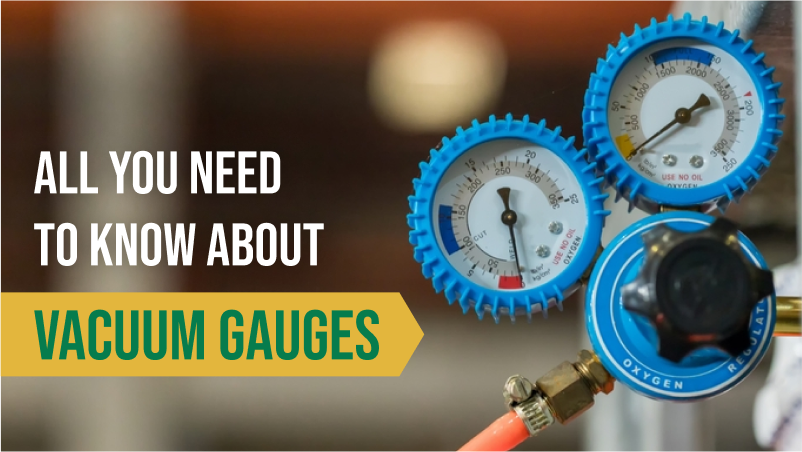
If you intend to have a new or replacement vacuum gauge for your vacuum system, you need to study about it thoroughly. It may appear to be a straightforward chore at first look, but there are various aspects to consider. The selection of a vacuum gauge can have a significant impact on your process and outcomes.
The decision-making process must consider a variety of variables that have an impact on the overall performance and dependability of a vacuum gauge. Every gauge has a different operating range, degree of precision, and set of advantages and constraints.
When choosing a vacuum gauge, the majority of individuals are unsure about which one to use. You must invest significant time in learning about the manufacturer’s product line to make the best choice. You can choose the best vacuum pressure gauge for your particular vacuum system by taking into consideration the given tips.
This article will assist you in selecting the right vacuum gauge for your operation. But first, let’s grasp some basic information.
How Does a Vacuum Pressure Gauge Work?
Most pressure gauges use a bended tube which is known as a bourdon tube. A pressure difference between the medium and the atmosphere causes the tube to deflect slightly. A mechanism converts the tube deflection to a dial needle position. The design basis for normal and vacuum pressure gauges is the same.
The majority of gauges are available with a back connection or a bottom connection (panel mount). Gauges come with stainless steel or plastic casings.
Types of Vacuum Gauges
There are several forms of pressure gauges with specific functions over a particular range of vacuum pressure.
Mechanical Gauges
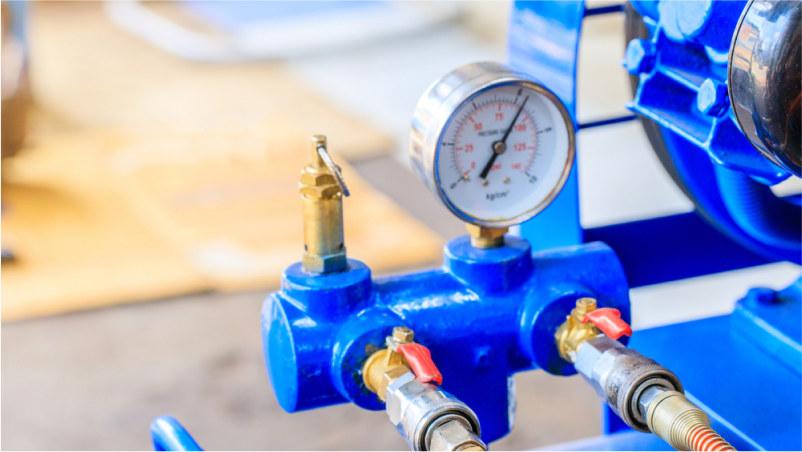
Mechanical gauges use mechanical changes in tubes or diaphragms to measure and vacuum pressure. These gauges’ pressure measurements are unaffected by the kind of gas being used. Bourdon gauges, capacitance gauges, diaphragm gauges, and capsule gauges are among the automated gauge types.
Bourdon Gauges
Bourdon gauges’ distinctive feature is a tube that has been bent into a circular arc with its end connected to the system. The end tube bends as a result of external atmospheric pressure during the evacuation procedure.
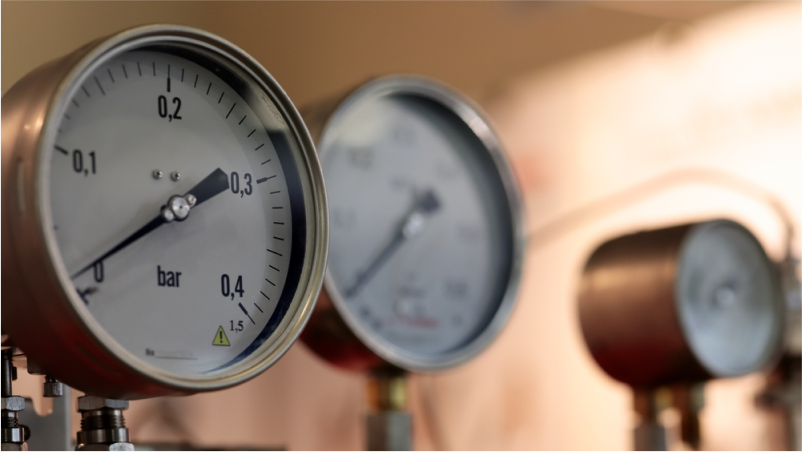
When the end tube bends, the pointer attachment moves, allowing the operator to record the pressure levels on the linear scale. Most bourdon gauges can measure pressure levels ranging from 0 bar to 10 mbar.
Capacitance Gauges
A capacitance diaphragm gauge or CDG monitors vacuum gas pressure by directly observing the force that is being applied to the surface of a thin diaphragm.
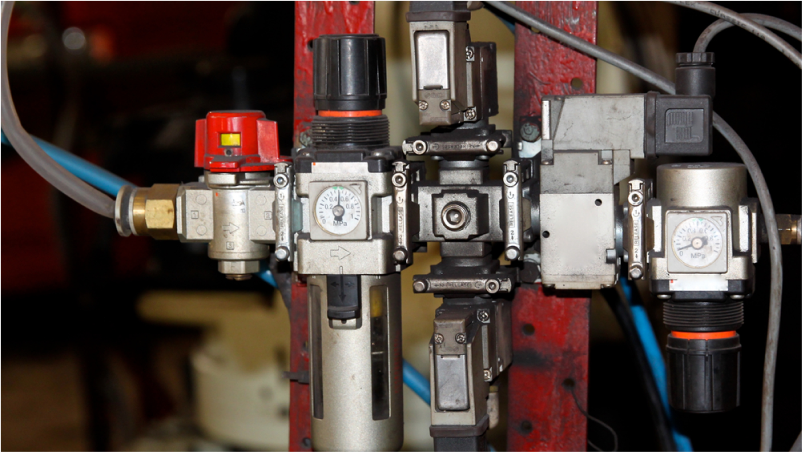
These gauges’ pressure-sensitive diaphragm, which is composed of reinforced ceramics, is a key component. A plate capacitor and an electrode attachment are fixed to the diaphragm’s back side. When the two capacitor plates move apart or together, the capacitance varies.
The change in the distance between the plates is often proportional to the variation in pressure. This pressure variation is converted into an electrical signal by the gauge, allowing the technician to correctly measure the pressure level. Capacitance gauges may monitor pressure levels ranging from 10 bar to more than 0 bar.
Diaphragm Pressure Gauge
A diaphragm pressure gauge aka membrane pressure gauge uses the deflection of a thin, flexible membrane to measure the pressure of the fluid in a system. The membrane keeps the pressure gauge’s internal workings separate from the media, preventing contamination.

Due to this feature, the diaphragm pressure gauge can be used with corrosive or contaminated liquid or gaseous media. This pressure gauge is designed to measure low pressures, such as measuring air pressure or keeping track of the pressure in a gas canister.
Capsule Gauge
Low/very low pressures and vacuum can be measured with capsule gauges. A gaseous medium under pressure is required. The capsule is made up of two diaphragms that have been combined and sealed throughout their perimeter. For the purpose of measuring very low pressures, several of these capsules can be combined.
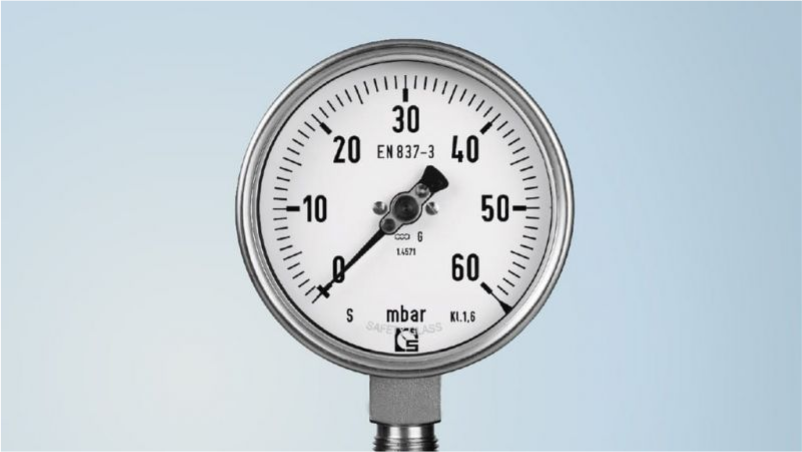
The pressure is typically applied to the interior of the capsule, which eventually modifies its shape. This deflection is turned into the rotation of a concentric pointer displaying pressure on a dial by use of a link and gear movement system.
Ionisation Gauges
Hot and cold cathode gauges are the two main types of ionisation gauges. To measure the gas and pressure, a technician uses a hot cathode gauge, which emits electrons to ionise the gas.

Engineers can calculate the gas pressure by observing the electric current flow between the anodes and the glass bulb inside the cathode. Cold cathode gauges are not susceptible to mistakes, while hot cathode gauges with large temperature changes are.
Best Vacuum Gauge Selection Tips and Tricks
The type of vacuum gauge that is being used can also depend on the building materials, required vacuum measuring method, environment, and electronics; each of these variables has a different range of vacuum pressure measurements.
It might be challenging to determine which vacuum gauge, from passive to active to direct and indirect, is best for your application given the variety of options available. To choose wisely, it is essential to have a clear grasp of the application and the pressure measurement required.
Since different pressure ranges require the use of various gauges, first of all, target the pressure range that you want to measure. Consider the measurement uncertainty/required accuracy as well.
Operating Vacuum Level & Accuracy
The vacuum level is the most important factor as every other element is impacted by vacuum level, thus you require a gauge that measures within your operating pressure range. Typical classes and ranges are:
Rough vacuum: from above atmospheric pressure to 1 mbar
1 mbar to 10 -3 mbar medium vacuum
High vacuum: 10-3 to 10-9 mbar
To obtain varied vacuum pressure ranges, different gauge approaches are required. For measurements across the whole pumping range, depending on the target vacuum level, a mix of gauges may be required.
Knowing the process requirements is essential to choose the appropriate rough/medium vacuum gauge because there are numerous possibilities, including direct and indirect solutions.
On the other hand, there are significantly fewer possibilities for high and ultra-high vacuum gauges, which are mostly either a hot cathode or cold cathode type gauges and indirect gauges.
Environmental Factors
The selection of gauge equipment may be impacted by the general installation environment.
When installing an industrial vacuum gauge in a high-temperature environment, the possibility of dirt, dust, and/or water intrusion may necessitate additional gauge protection, such as an enclosure or a modified environment.
You should also consider the impacts of radiation and output signal loss when controlling a gauge from a remote distance.
Conduct Research
Since the modern way of conducting business these days is online, you should all search the Internet for information to buy vacuum gauges & controllers online. Try to discuss your plans with others and ask them for recommendations on the pressure gauge manufacturers you should go with.
Furthermore, you may evaluate each of those choices. This particular step will assist you in gaining a clear understanding of which pressure gauge manufacturers provide the best vacuum pressure measurement equipment and which ones may not be that great.
Therefore, make sure not to overlook this process because it can aid in reducing your options and leaving you with the best vacuum pressure management device.
Cost
Everyone has a budget. To buy the best industrial products online, you need to check and compare the pricing offered by the various pressure gauge manufacturers.
It’s critical to keep in mind that while prices matter, they should never be seen as the deciding factor. Quality always comes first because your ultimate goal is to acquire high-quality vacuum pressure measurement devices.
Additional Tips
The selection parameters that technicians should take into account before buying pressure and vacuum gauges online and associated instruments are:
- The pressure levels you are trying to find. Based on the working pressure, vacuum gauges are divided into three groups: Absolute pressure gauges, medium vacuum gauges, and high vacuum gauges.
- The level of accuracy you are looking for with your vacuum pressure management device.
- The form of gas you are dealing with: corrosive, reactive, or inert gas.
- Regulate and monitor pressure levels.
- Form of environment you want to use your vacuum pressure gauges in.
- Power requirements.
By keeping this point in mind you can buy the best industrial tools and gauges.
Closing Remarks
There are various reliable and acceptable gauges available; each one has benefits and drawbacks. We have tried to cover everything you require to know to choose the right vacuum gauge for your application including types of gauges, selection criteria, and how to make the right choice.
